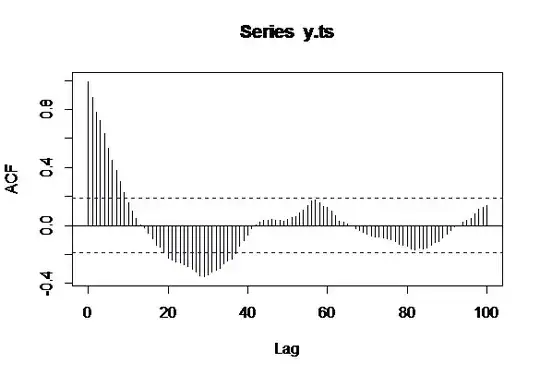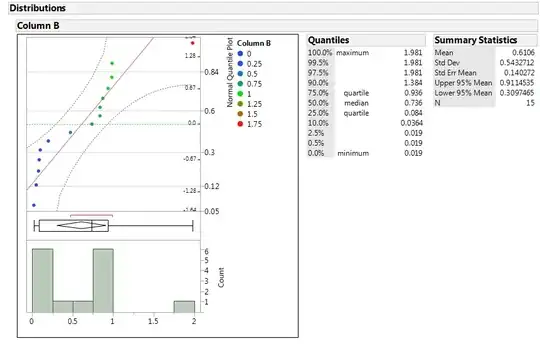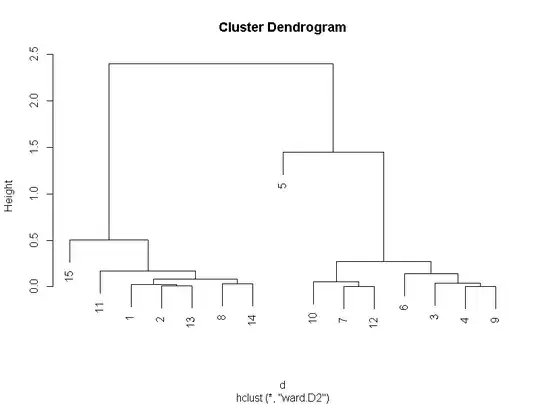This tool is JMP, but there are many others too.
Here is how to do it in JMP:
This dialog shows several families of how to make a 1d clustering.

Choosing the defaults, and coloring by value of "Column B", then selecting only the constellation plot gives the following:

This is only about the 2-norm between all pairs of points. There are other norms. There are other transformations.
When the distribution is plotted, the "clusters" (vertical groupings) are also somewhat visible.

To my untrained eye there are at least 3 general groups, and one of those has what looks like 3 sub-groups.
HERE is how to do similar (not same) in R:
Here is the code:
#load data
mydata <- read.csv("data.csv")
#compute distance matrix
d <- dist(as.matrix(mydata$Column.B), #the data
method = "euclidean") #the distance measure
#compute cluster membership
hc_0 <- hclust(d, #the distance matrix
method = "ward.D2" #the cluster method
)
#plot of dendrogram
plot(hc_0)
Here is the result:

It is not a constellation plot, but a dendrogram. Other functions to look at include "rect.hclust" and the "rpuHclust". The "rpuHclust" comes from the "rpuHclust" package.
There are at least 3 other things to consider.
- The "method" in "dist" can be lots of things including absolute
distance, squared distance, or some other measure.
- The "method" in "hclust" can be lots of other things including "ward.D", "average", "centroid", "median" and others. Each has strengths and weaknesses.
- The "hclust" is one type of clustering but there are others. K-means or Gaussian mixture models come to mind.
All of these approaches can be appropriate for some cases and not appropriate for others. What question are you trying to answer with the cluster membership? If you want robust classification then you need a lot more samples. If true physics says your data is multivariate and you are trying to defy it using statistics, then your correct binning might be a problem. If you are just looking to get a sense of how many buckets might be a good value to start with for the data give what you have then this might not be a bad way to start in on that.



